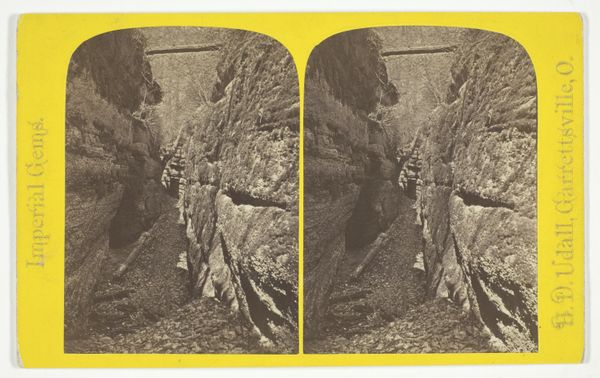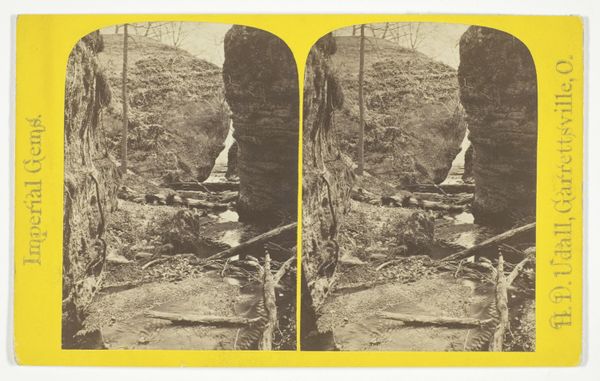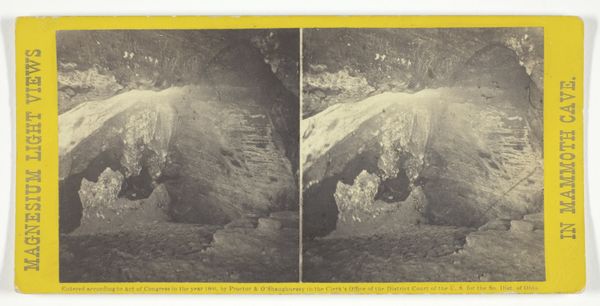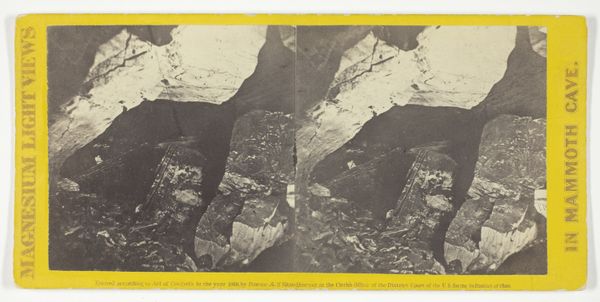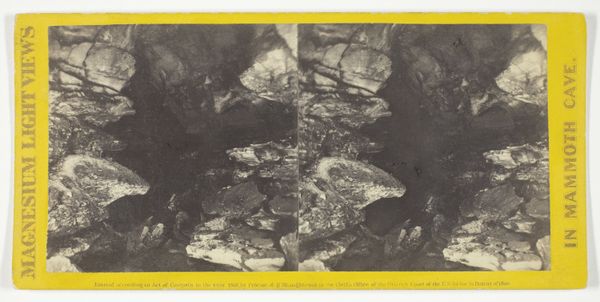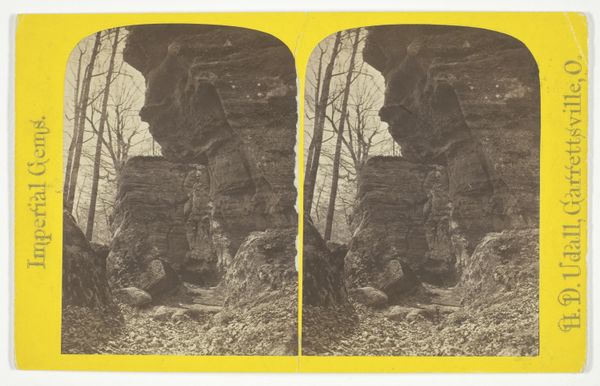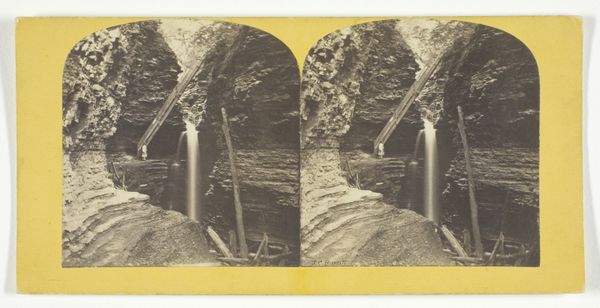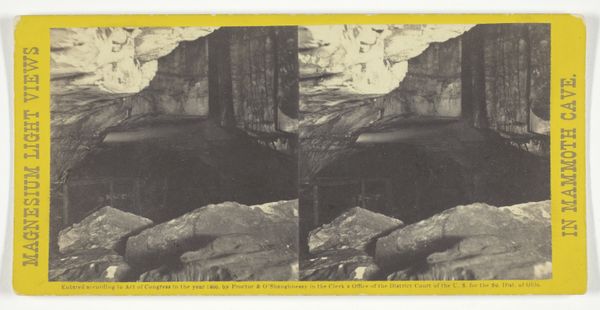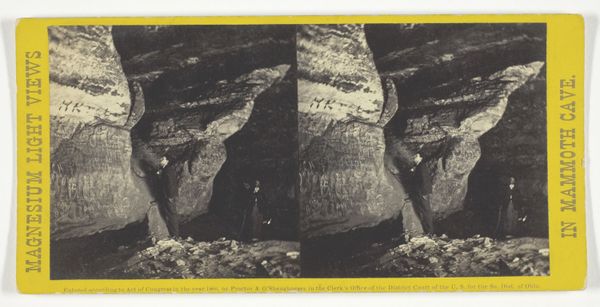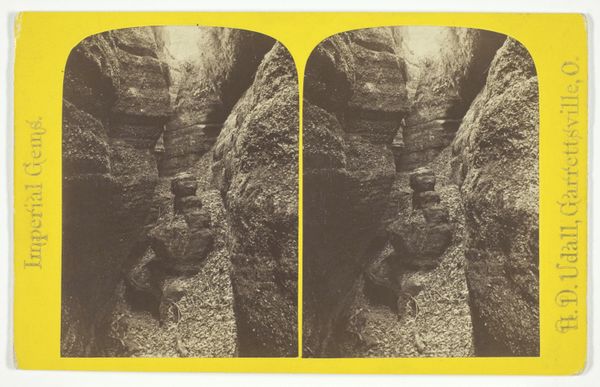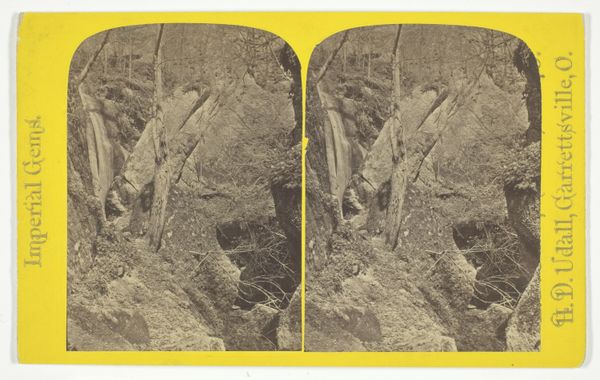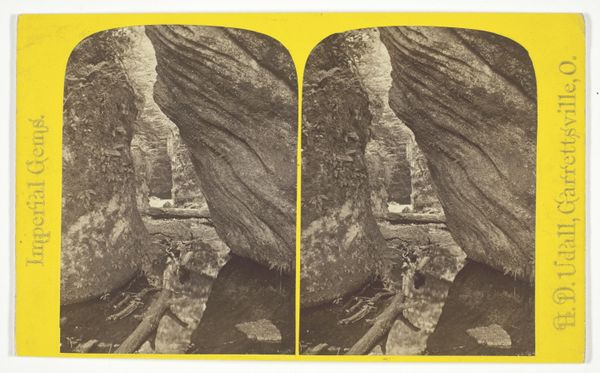
print, photography
#
16_19th-century
# print
#
landscape
#
photography
#
realism
Dimensions: 8 × 7.7 cm (each image); 8.7 × 17.5 cm (card)
Copyright: Public Domain
Curator: "Artist's Dream," created between 1860 and 1899, is a photographic print that presents an interesting dialogue between realism and constructed imagery. It's currently part of the collection at The Art Institute of Chicago. What strikes you initially? Editor: I find it quite bleak, actually. The tones are very muted, almost monochromatic. It seems to be a landscape, but it's not exactly inviting. Curator: Yes, that muted quality is typical of early photographic processes. Consider the labor involved—the preparation of the glass plates, the light-sensitive chemistry... This image wasn't easily produced; it represents significant material effort. It’s also interesting how photography at the time was both a scientific tool and a developing art form, often used to document nature or events. Editor: And how these landscape images played into constructing the identity of nations! The focus on rugged nature almost romanticizes and justifies an ideology, whether that's about Manifest Destiny or taming the wild. I can't help but wonder what other voices are absent. Who was excluded from this artistic and political landscape? Curator: A valid question. I think the composition, the way the waterfall is captured amidst the rocks, speaks to the industrial-era fascination with both nature's power and its resources. What looks idyllic was increasingly threatened. There's tension between appreciating and exploiting it. Editor: Exactly. Looking at this now, I feel an undercurrent of tension between how we idealize nature and our impact upon it. This wasn't just an aesthetic appreciation; it was often deeply tied to colonial expansion, resource extraction, and even forced displacement. Curator: That’s right. Photography played a critical role in documenting and promoting specific narratives around these processes, often ones of control and resource allocation, as photography was employed as a means to capture and later allocate land for a variety of industrial uses. Editor: Seeing this artwork invites important reflections about our present and the historical frameworks shaping how we approach our environment. Curator: Precisely. Considering these elements provides a wider view on photography's evolution and how it mirrors larger societal changes. Editor: Agreed, engaging with this image prompts necessary conversations about environmental exploitation, cultural representation, and whose stories are not yet visible. Curator: Indeed. Thank you for enriching this observation.
Comments
No comments
Be the first to comment and join the conversation on the ultimate creative platform.

